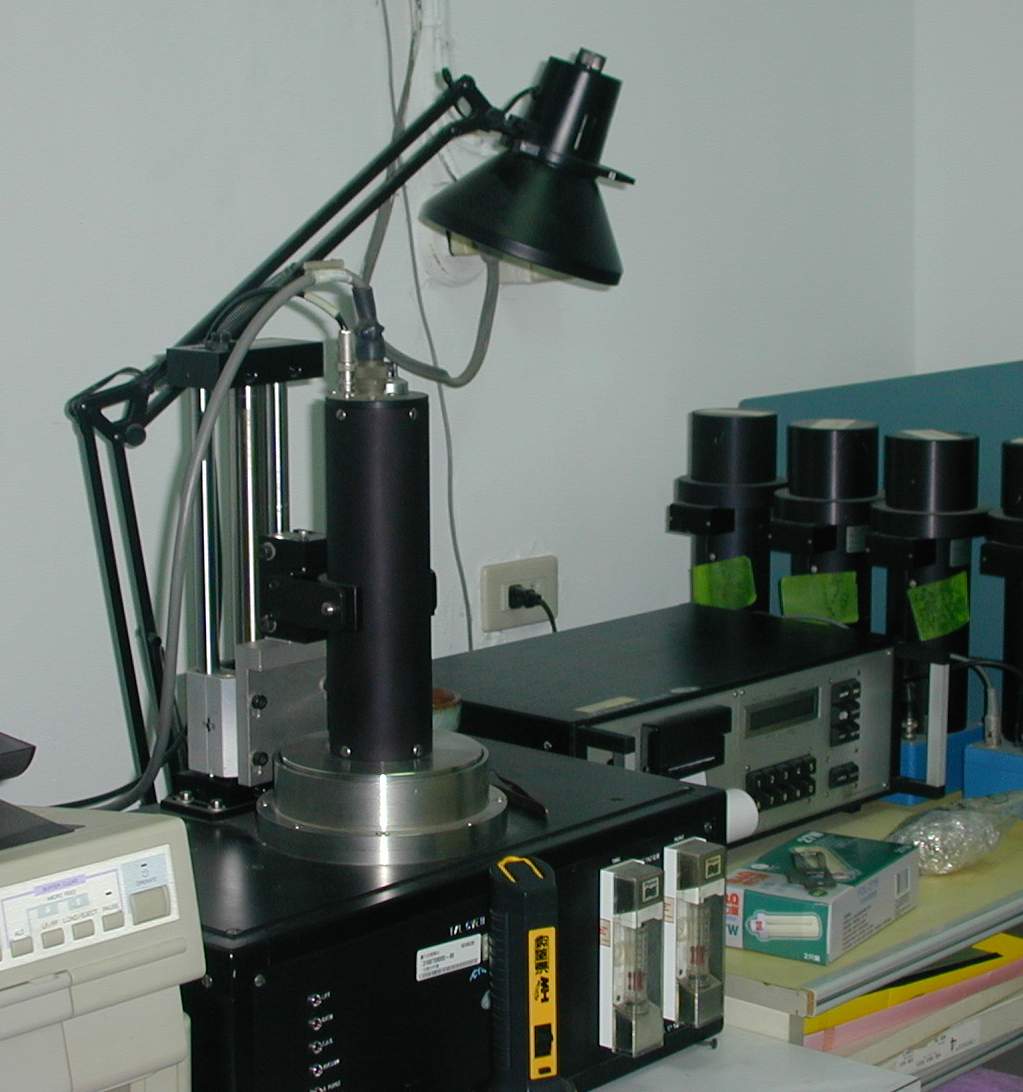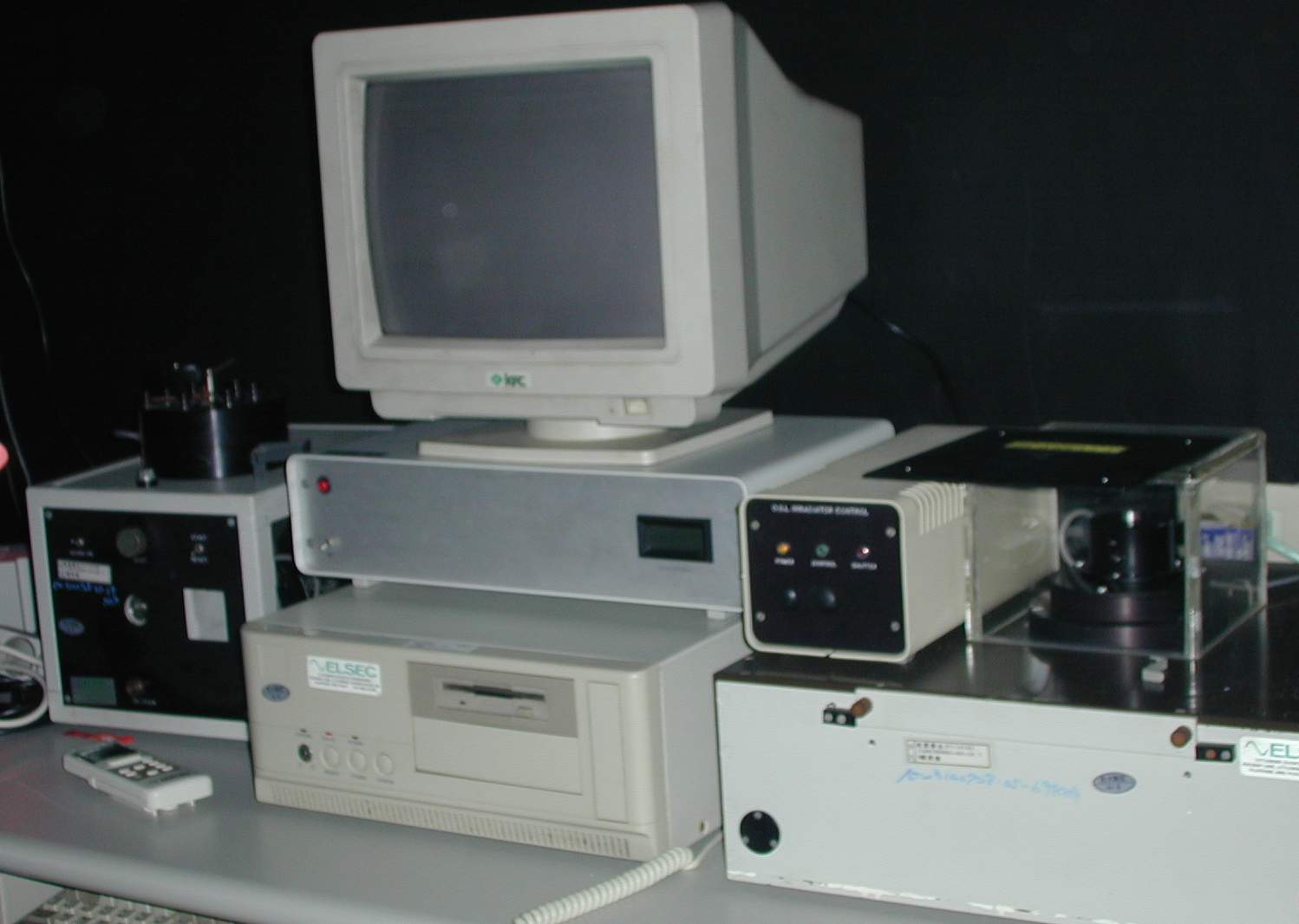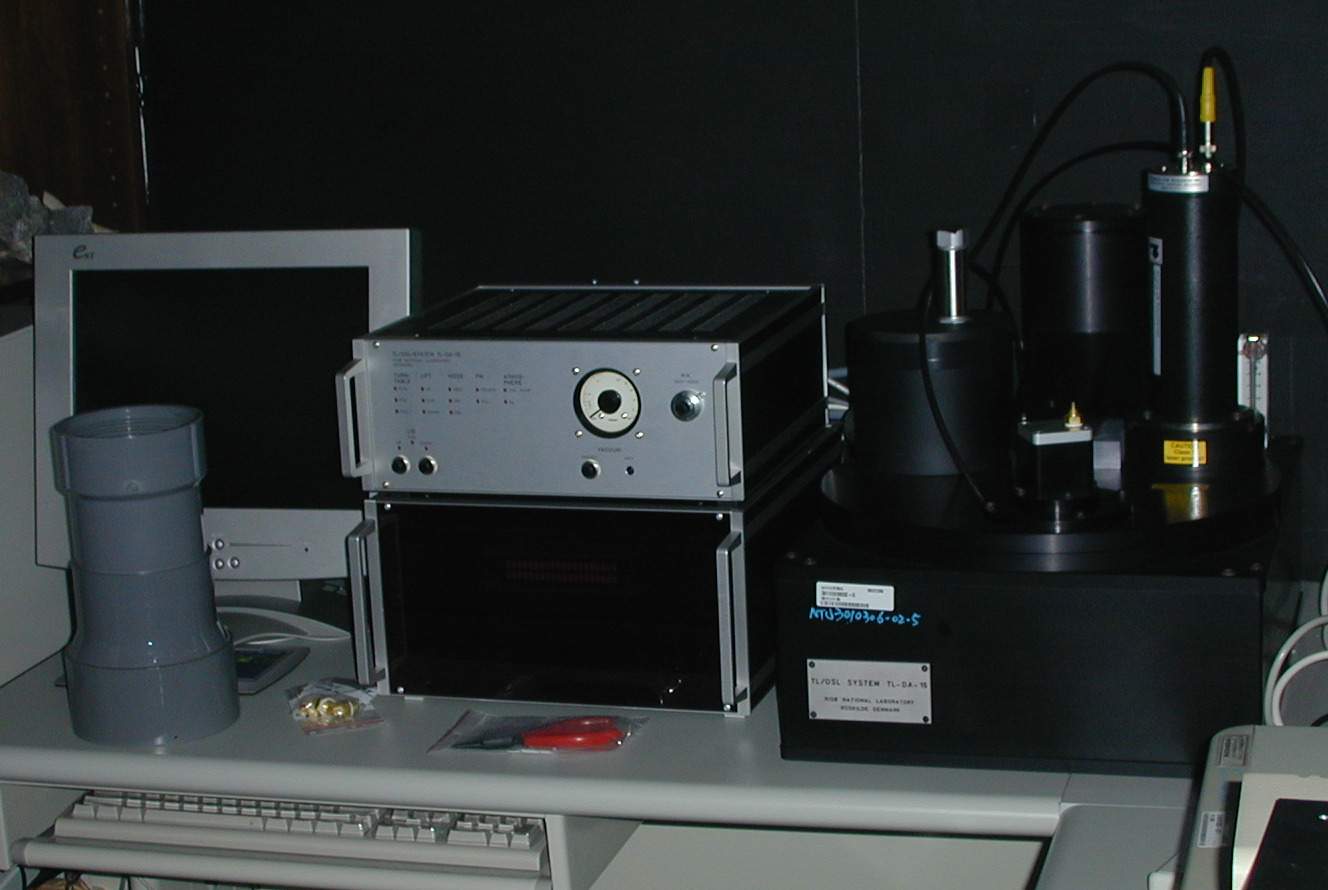| |
In the crystal the electrons which have been detached ("ionized") by the radiation from their parent nuclei have diffused into the vicinity of a defect in the lattice that is attractive to electrons, and becoming trapped. The more prolonged the exposure to nuclear radiation the greater the number of trapped electrons. However, if the crystal is heated then the energy of the vibrations increases until a certain temperature the electron is detrapped; alternatively detrapping may take place as a result of absorption of a photon of light. Electrons evicted from traps diffuse around the crystal until some form of recombination center is found. Recombination into certain types of center, luminescence centers, gives rise to the emission of light, i.e. thermoluminescence. The light emitted is proportional to the number of trapped electrons, i.e. the time exposure to nuclear radiation. So we can get the base formula as follow:
TL Age = the total dose / the annual dose
By this way, two classes of events can be dated,
(1) growth of a mineral or its last cooling, like volcano dust, baking pottery,
(2)the last exposure to sunlight, such as buried soils, waterlaid silts
OSL Dating System
The OSL process is similar except that stimulation is by LIGHT: by shining light of appropriate wavelength onto the sample, electrons are evicted from traps and some of these reach luminescence centers; if so, light (i.e. OSL) is emitted in the process of combining into these centers. Compared with TL dating system, this method promises to be more simple, sensitive and speedy.
|
|


 ¡@¡@Glow Oven System
¡@¡@Glow Oven System ¡@¡@Beta-irradiator & Alpha-irradiator
¡@¡@Beta-irradiator & Alpha-irradiator ¡@¡@OSL Dating System
¡@¡@OSL Dating System